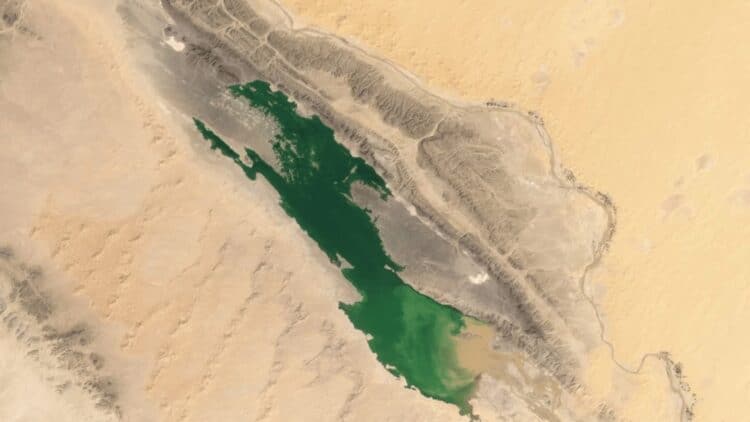It seems unreal, but there was a time when the Sahara Desert was green. Really green, with vegetation, frequent rainfall, and even communities living there. Hard to imagine, right? After all, today we know the Sahara as one of the driest places on the planet. But, according to recent NASA data and studies on the climate of thousands of years ago, this scenario was quite different. And the most curious thing: in 2024, some parts of the region again received an unusual amount of rainfall.
How can it rain in the desert?
It all began in 2024 when something truly unusual happened in the Sahara Desert: several consecutive days of rain. Yes, rain in a place where a drop rarely falls. One of the most surprising episodes occurred in northeastern Sudan, where the Arba’at Dam couldn’t handle the pressure and collapsed. And it wasn’t just a small amount of rain. NASA estimates indicate that the equivalent of five years’ worth of rain fell in just one month.
Now, crossing to the other side of the desert, there in Morocco, it also rained heavily in the regions south of the Atlas Mountains. The result? Lakes formed in areas that had been dry for decades. Of course, some headlines exaggerated a bit when they said that “the Sahara was flooded for the first time in 50 years” because the affected area was quite small, and what is or isn’t “desert” varies from source to source. But the fact remains: data from IMERG confirms that we are facing a very rare climate event worldwide.
Discover the Green Sahara Desert
No, it’s not a lie, nor is it just a show-off, but the Sahara was once… green. Literally. We know this because researchers at the University of Oxford analyzed stalagmites in caves in Morocco and identified oxygen isotopes that reveal a humid past in the desert, between 8,700 and 4,300 years ago, also known as the African Humid Period. During this period, tropical columns, which are large cloud systems formed by temperature differences between the hemispheres, dumped rain across the region.
The result? You might already guess, but it was a habitable desert, with dense vegetation and human communities practicing agriculture (quite unlike this one, home to a shiny white skull). To further reinforce this discovery, several Neolithic villages emerged right during the period of heavy rains, which shows how the climate changed everything.
So will the Sahara stop being a desert?
With so much water falling there, you’d imagine a verdant landscape from above, right? But in practice, it wasn’t quite like that. That’s because, when analyzing the NDVI index (used to measure vegetation density via satellite), NASA concluded that the Sahara remained practically as arid as before. Yes, there was an increase in vegetation, yes, but this was more so in the Sahel, which is a strip of savanna south of the desert.
The explanation? Well, vegetation’s response doesn’t depend solely on rainfall. Other factors like soil type, air temperature, and water history play a big role. If we look back to the deep Sahara, where the soil is sandy and there are almost no dormant seeds waiting for water, a single rainfall isn’t enough to make greenery flourish. Now, in the Sahel, the combination of fertile soil and dormant vegetation has created a veritable boom in life; perhaps all is not lost.
This kind of news offers a glimmer of hope, since after seeing so many dams collapse, dry riverbeds turn into lakes, and the Sahel flourish again, imagining how the center of the Sahara remains resilient to greenery shows how climate change still has difficult boundaries to cross. Perhaps the secret lies in the desert; it’s no wonder this white desert is the future of humanity.


